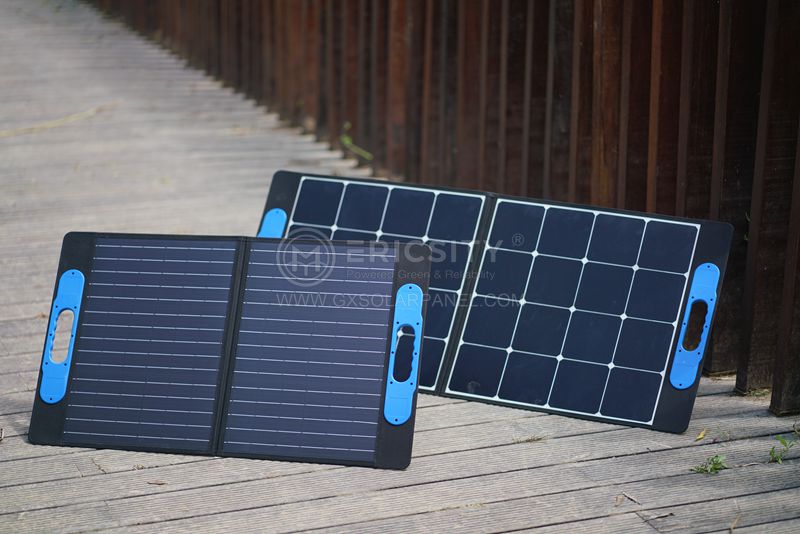HOT PRODUCT
Product Details
Solar Folding Vs. Traditional Solar Panels: Which Is More Efficient?
Solar Folding Vs. Traditional Solar Panels: Which Is More Efficient?
Solar energy is an increasingly popular and sustainable source of electricity. It provides numerous benefits, including reducing greenhouse gas emissions and lowering dependence on fossil fuels. As solar technology advances, new innovations, such as solar folding panels, have emerged to improve efficiency and flexibility. In this article, we will compare solar folding panels with traditional solar panels to assess which is more efficient.
Before delving into the specifics, let us first understand the basic functioning of solar panels. Traditional solar panels are made up of photovoltaic (PV) cells, which convert sunlight into electricity. These cells are usually made of silicon and are encapsulated within a protective glass and aluminum frame. When sunlight hits the PV cells, they create an electric current, which can be used to power various devices.

One primary advantage of solar folding panels is their portability. Unlike traditional solar panels, which are fixed in place, folding panels can be easily transported and set up in different locations. This makes them ideal for camping trips, backpacking adventures, or emergency situations. Traditional solar panels, on the other hand, require a more permanent installation, making them better suited for rooftops or large-scale solar farms.
In terms of efficiency, both types of panels can generate electricity from sunlight, but the efficiency may vary. Traditional solar panels generally have a higher efficiency rate, typically ranging from 15% to 20%. The efficiency of solar panels refers to the percentage of sunlight that can be converted into usable electricity. On the other hand, solar folding panels tend to have a slightly lower efficiency range of 10% to 15%.
The lower efficiency of solar folding panels can be attributed to their design. These panels are composed of smaller and more flexible PV cells, which inherently have a lower efficiency compared to larger, rigid PV cells found in traditional panels. However, the efficiency difference between the two types of panels is not significant enough to negate the benefits of solar folding panels in certain applications.
Another factor to consider when comparing these two types of solar panels is the spatial footprint. Traditional solar panels require a considerably larger space due to their fixed installation. They need to be oriented toward the sun at an optimal angle and often require an unobstructed area, such as a rooftop or a dedicated ground installation. Solar folding panels, on the other hand, provide the advantage of flexibility in placement. They can be easily adjusted to face the sun and can fit into smaller areas.

Despite the lower efficiency and smaller footprint, solar folding panels can still be highly efficient in specific situations. For example, in off-grid scenarios where the energy demand is relatively low, the convenience and portability of folding panels can outweigh a slight reduction in efficiency. These panels are also ideal for mobile applications, such as recreational vehicles or boats, where flexibility and ease of installation are valued.
It is worth mentioning that ongoing research and development in solar technology may lead to advancements in both traditional and folding solar panels. Scientists and engineers are continuously exploring new materials, designs, and manufacturing techniques to enhance the efficiency and affordability of solar panels.
In conclusion, the choice between solar folding panels and traditional solar panels depends on the specific requirements and circumstances. Traditional solar panels offer higher efficiency but require fixed installations. On the other hand, solar folding panels provide portability and flexibility, making them suitable for various mobile or off-grid applications. As technology advances, it is likely that the efficiency of solar folding panels will improve, making them an even more viable option for renewable energy generation.




